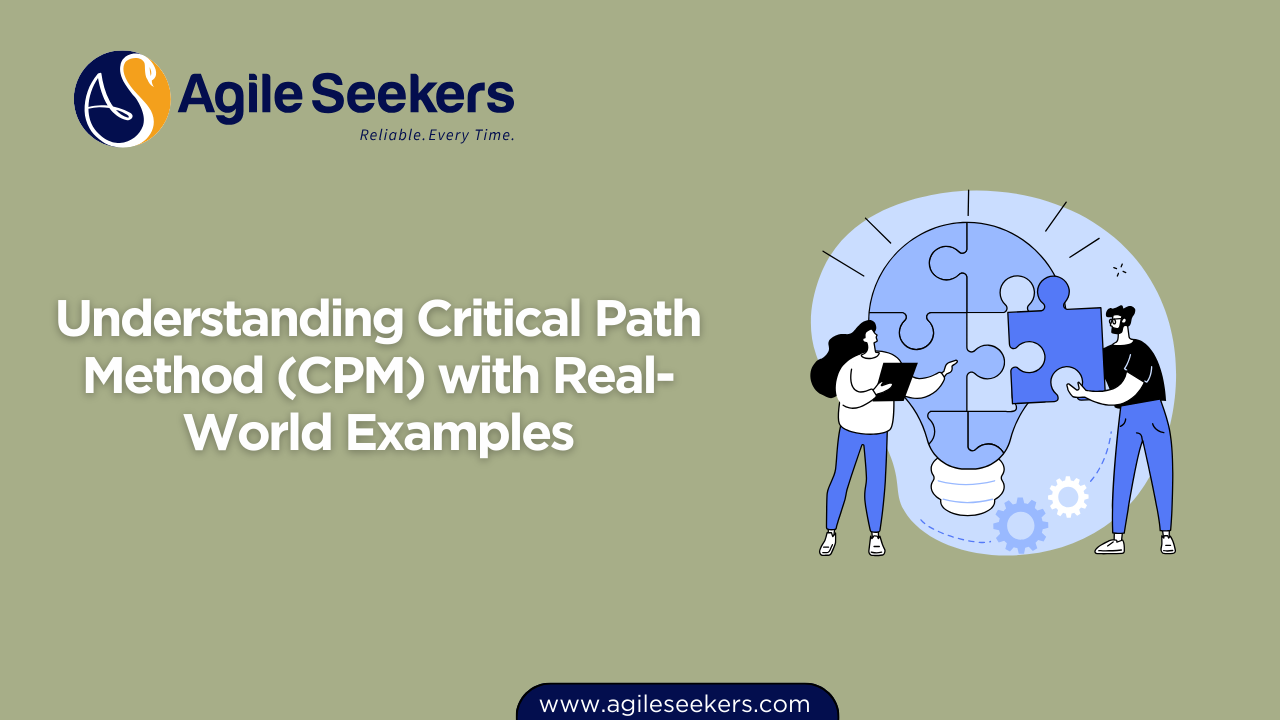Understanding Critical Path Method (CPM) with Real-World Examples

The Critical Path Method (CPM) is a powerful scheduling technique used in project management. It helps project managers identify the longest sequence of dependent tasks — called the critical path — that determines the project’s total duration. Knowing the critical path gives you clarity on which tasks directly affect the project’s completion date and which tasks have flexibility or float.
Whether you’re managing construction, software development, event planning, or manufacturing, mastering CPM helps you improve scheduling accuracy, reduce delays, and deliver successful projects.
What is the Critical Path Method?
CPM is a mathematical approach to project scheduling. By breaking the project into smaller tasks, identifying dependencies, estimating durations, and calculating the longest path, you can see the minimum time required to complete the project. Any delay in critical tasks leads to a delay in the entire project.
Key Concepts:
- Activities: Individual tasks or work units in the project.
- Dependencies: Logical relationships between tasks (e.g., Task B cannot start until Task A finishes).
- Duration: Time estimates for each activity.
- Critical Path: The longest path through the project, determining the shortest completion time.
- Float (Slack): The amount of time non-critical tasks can be delayed without affecting the project’s finish date.
Steps to Apply CPM
- List All Activities: Break the project down into detailed tasks or activities.
- Define Dependencies: Identify which tasks depend on others.
- Estimate Durations: Assign realistic time estimates for each activity.
- Draw a Network Diagram: Map the sequence and dependencies visually.
- Identify All Paths: Trace all routes from start to finish.
- Calculate Path Durations: Add up the total time for each path.
- Find the Critical Path: The path with the longest total duration is your critical path.
- Monitor and Update: Track progress and adjust the critical path as needed.
Why is CPM Important?
CPM improves project control by highlighting which tasks need focused attention and which have flexibility. For professionals pursuing the Project Management Professional certification, understanding CPM is essential because it’s a key part of the Project Schedule Management process.
When you take PMP certification training, you’ll encounter CPM as a foundational tool, alongside techniques like resource leveling, schedule compression, and Earned Value Analysis (EVA).
Real-World Example 1: Construction Project
Let’s apply CPM to a small construction project — building a house:
| Activity | Duration (Days) | Dependencies |
|---|---|---|
| A: Lay foundation | 5 | Start |
| B: Build frame | 10 | A |
| C: Install roof | 4 | B |
| D: Install windows | 3 | B |
| E: Paint walls | 2 | D |
| F: Final inspection | 1 | C, E |
Path 1: A → B → C → F = 5 + 10 + 4 + 1 = 20 days
Path 2: A → B → D → E → F = 5 + 10 + 3 + 2 + 1 = 21 days
Critical Path: Path 2, with 21 days, is the critical path. Delays here will push back the project finish date, while Path 1 has 1 day of float.
Real-World Example 2: Software Development Project
| Activity | Duration (Days) | Dependencies |
|---|---|---|
| A: Requirements gathering | 5 | Start |
| B: Design | 7 | A |
| C: Development | 15 | B |
| D: Testing | 8 | C |
| E: Deployment | 3 | D |
| F: Documentation | 4 | B |
| G: User training | 2 | F, E |
Path 1: A → B → C → D → E → G = 5 + 7 + 15 + 8 + 3 + 2 = 40 days
Path 2: A → B → F → G = 5 + 7 + 4 + 2 = 18 days
Critical Path: Path 1 (40 days) is critical. Delays in development, testing, or deployment will affect the whole project, while documentation has slack.
Tools to Help Apply CPM
Several tools support CPM:
- Microsoft Project — robust, industry-standard project scheduling tool.
- Primavera P6 — popular in construction and large-scale projects.
- Smartsheet or Monday.com — easy-to-use platforms for collaborative tracking.
You can explore options on ProjectManager.com for tool comparisons and tutorials.
Best Practices
- Keep your schedule updated frequently.
- Communicate critical tasks clearly to your team.
- Watch for resource constraints that can affect the critical path.
- Use float strategically to manage risk.
- Review dependencies carefully to avoid errors.
Why CPM Matters for PMP Professionals
For those pursuing PMP training, CPM is a must-know topic. It’s foundational to the Project Schedule Management domain and frequently appears in exam questions.
Whether you’re working on construction, IT, or product development, using CPM sharpens your project control and improves your ability to deliver on time and within scope.
For deeper learning, visit the Project Management Institute (PMI), the official global standard-setting body for project management practices.
If you’re ready to advance your career, explore PMP certification and elevate your expertise in applying methods like the Critical Path Method effectively.
Also check - How to Calculate and Apply CPI and SPI
Also see - Using Monte Carlo Simulation for Risk Analysis in Project Management




















